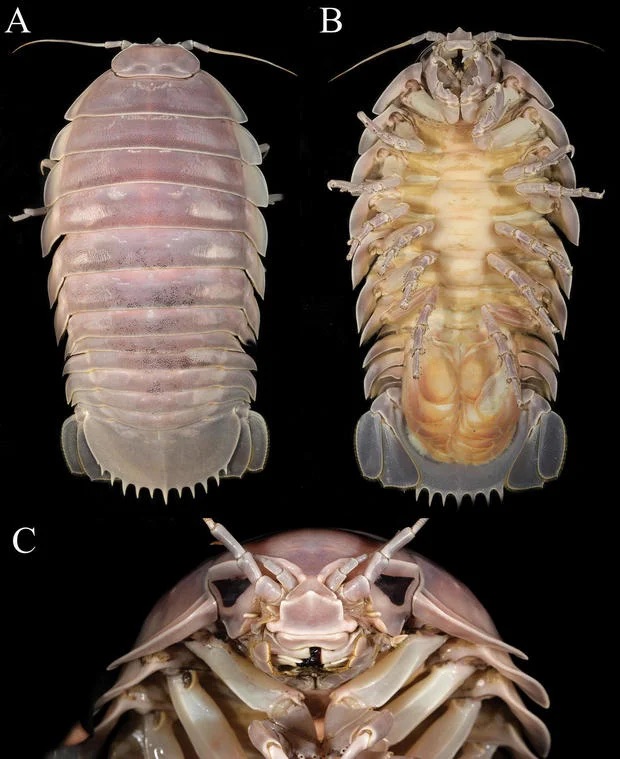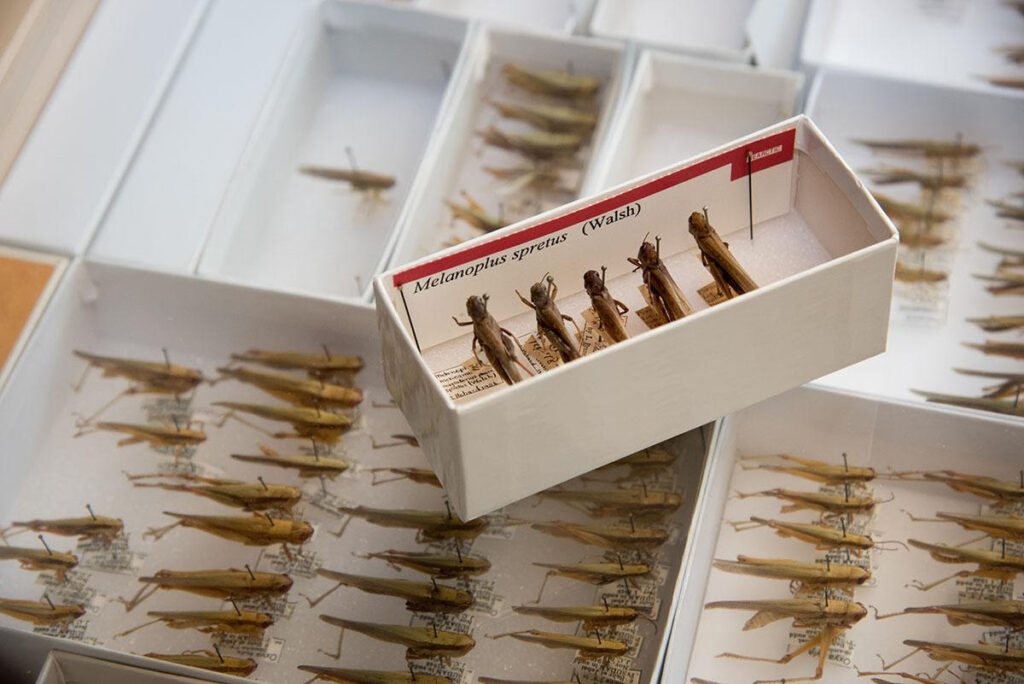New species always seem to turn up in the unlikeliest of places. We recently covered the newly described species of beetle found outside of Woonoongoora Lamington National Park in tropical North Queensland. The finding was pure happenstance; the area was well-researched, yet the beetle, small but flamboyant in appearance, went completely unnoticed until a chance encounter with an entomologist on a camping trip. Small organisms, even the flashy ones, are somewhat understandable, especially in the wild, but arthropods have a way of showing up when and where you least expect them.
Giant isopod species discovered in Vietnamese live-seafood market
Giant isopods are having a moment in Southeast Asian cuisine. The demand for these enormous deep-sea “roly polys” is higher than ever, no doubt in part due to their popularity on social media. In 2022, a group of curious researchers from Hanoi University took advantage of the burgeoning food trend and purchased several male specimens from the live seafood market in Quy Nhơn City. A thorough analysis revealed a previously undescribed species in the genus Bathynomus, which the team named Bathynomus vaderi, as the isopod appears to wear a “helmet” that shares a striking resemblance to that of the famous Sith lord.
World's first amphibious centipede found by vacationing entomologist
In the year 2000, Dr. George Beccaloni, a former curator of entomology at London’s Natural History Museum, was honeymooning in Thailand and doing what any entomologist on vacation would do: turning over rocks and looking for bugs. As he flipped stones on the shore of a creek in Khao Sok National Park, a large, formidable centipede shot out from under a rock. But instead of seeking safety on land, the centipede went straight for the water–and it didn’t stop. Dr. Beccaloni’s find was the world’s first known example of a semi-aquatic centipede.
Now listen, I love bugs. Even centipedes. But even George had some choice words for his find. “It was pretty horrific-looking: very big with long legs and a horrible dark, greenish-black color.” Yeesh.
Extinct locust found by undergraduate sorting specimens
Undergraduate work is rarely glamorous, and often includes tedious duties like data entry and specimen sorting. But when you spend your days eyeballing insect collections, you tend to notice when something is amiss. That was exactly the case for Brandon Woo, who recovered three intact specimens of the infamous Rocky Mountain locust (Melanoplus spretus) in 2016 while an undergraduate at Cornell. The Rocky Mountain locust was once an abundant pest species that plagued western settlers in the mid-to-late 1800’s. As farming and agricultural practices expanded westward towards the Great Plains, Melanoplus spretus not only consumed the crops, but leather horse harnesses, wool straight from the sheep’s back, wood, clothes; you name it. As the farmers of the time put it, they “ate everything but the mortgage.”
Once their breeding grounds were uncovered, they were swiftly eradicated — so quickly, in fact, that very few specimens were collected for research. Woo’s discovery adds three more examples of this exceedingly rare insect to Cornell’s collection, which at the time contained only two.
So, wherever you are and whatever you do, keep your curious mind active and flex your inquisitive muscles from time to time. Keep flipping over rocks, investigate collections, look closely, and, above all else, explore—even if it’s just in your backyard.

